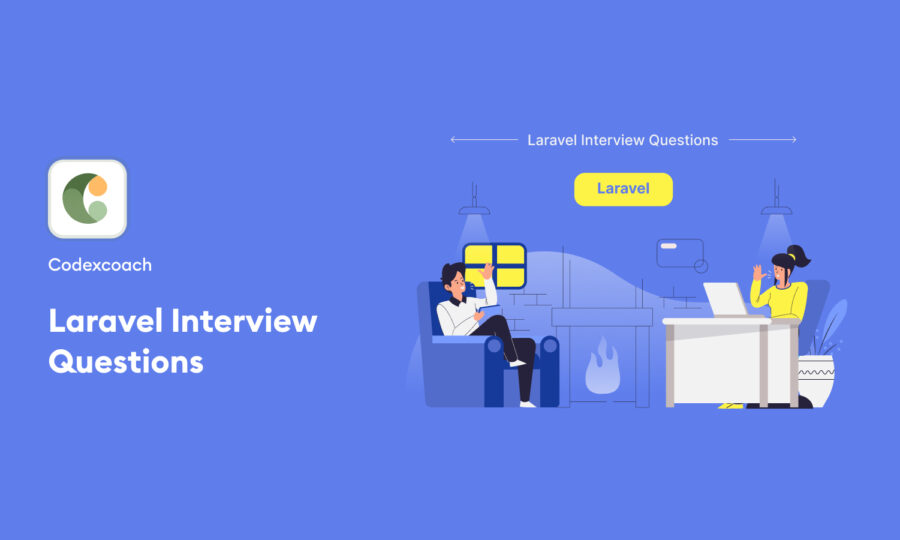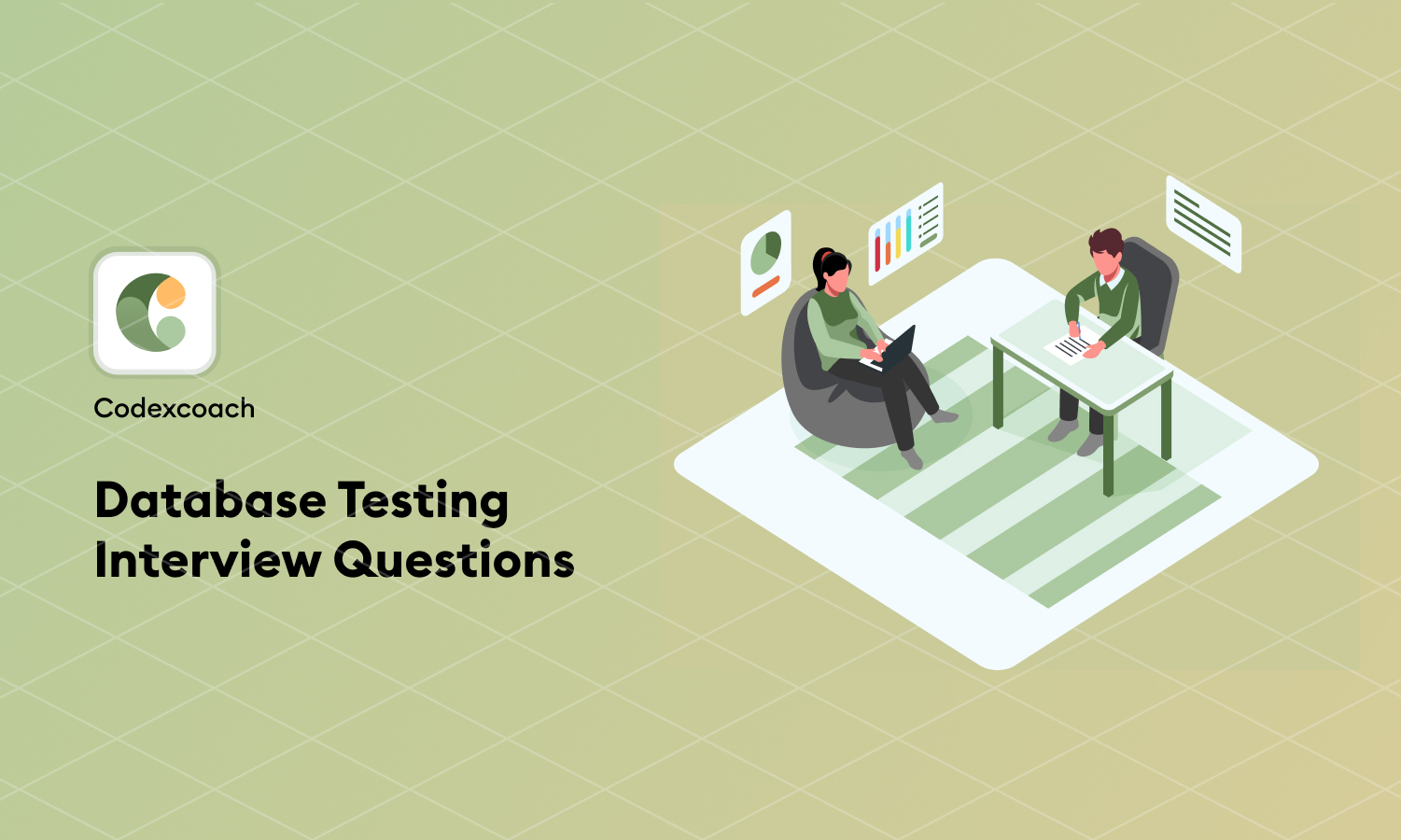1. What is Laravel and what makes it different from other PHP frameworks?
Answer: Laravel is a modern, open-source PHP framework designed for web application development. It follows the Model-View-Controller (MVC) architectural pattern. What sets Laravel apart is its elegant syntax, robust features like Eloquent ORM, Blade templating engine, middleware, and extensive library of packages. It’s known for its efficiency in task management and routing, making it a preferred choice for developers seeking a balance between functionality and simplicity.
2. Explain the Eloquent ORM in Laravel.
Answer: Eloquent ORM (Object-Relational Mapping) is one of Laravel’s standout features, providing an active record implementation for working with databases. It allows developers to interact with database objects and relationships using expressive, intuitive syntax. This simplifies the process of performing database operations, making it easier to insert, update, and query data without writing SQL queries.
3. How does middleware work in Laravel?
Answer: Middleware in Laravel acts as a filtering mechanism, sitting between the request and response. It can inspect and even modify HTTP requests before they reach the application or before the response is sent back to the user. Common uses of middleware include authenticating users, logging requests, or performing any other task that should happen before or after a request is handled.
4. Can you explain Laravel’s service container?
Answer: The Laravel service container is a powerful tool for managing class dependencies and performing dependency injection. It’s essentially a container that holds and resolves the dependencies of classes. When a class depends on another class, the service container injects the required dependency rather than the developer manually creating an instance of that class. This makes the code more maintainable and testable.
5. What are Laravel facades?
Answer: Facades in Laravel provide a “static-like” interface to classes that are available in the application’s service container. They serve as a convenient way to use Laravel’s features without needing to manually manage class dependencies. Facades provide a simple syntax while still enabling testability and flexibility of the Laravel framework.
6. Describe database migrations in Laravel.
Answer: Database migrations are a type of version control for database schemas. They allow developers to modify the database schema and apply these changes across development, staging, and production environments in a controlled and versioned manner. Migrations are paired with Laravel’s schema builder to easily build and modify database tables.
7. What are Laravel contracts?
Answer: Laravel contracts are a set of interfaces that define the core services provided by the framework. By using contracts, developers can ensure that they use a consistent API regardless of the underlying implementation. It promotes loose coupling and enhances package development.
8. Explain the Blade templating engine in Laravel.
Answer: Blade is Laravel’s built-in templating engine. It allows for more expressive, cleaner templates compared to plain PHP code. Blade templates are compiled into plain PHP code and cached until they are modified, ensuring optimal performance. It provides convenient shortcuts for common PHP control structures and template inheritance.
9. What is Laravel Scout?
Answer: Laravel Scout provides a simple, driver-based solution for adding full-text search to Eloquent models. It’s designed for ease of use and allows for implementation of powerful search functionalities with minimal setup. Scout works with various search engines like Algolia, and developers can also write custom drivers.
10. How does Laravel handle task scheduling?
Answer: Laravel’s command scheduler allows concise and expressive definition of command schedule within Laravel itself, without the need to use a separate cron or task scheduler. This feature simplifies the management of periodic tasks such as cleaning up databases, sending out emails, or gathering data.
11. Explain Laravel’s routing system.
Answer: Laravel’s routing system is very flexible and simple, allowing developers to define routes in the web application. Routes in Laravel can be defined in the routes folder, and they direct incoming requests to controllers or closure functions. Laravel supports various types of routes including GET, POST, PUT, DELETE, and more, enabling RESTful routing out of the box. It also supports route parameters, middleware, and grouping, which offers powerful and expressive routing capabilities.
12. What are Laravel Collections?
Answer: Collections in Laravel are a convenient wrapper around arrays, providing a fluent, object-oriented interface for working with array data. Collections offer a variety of helpful methods for traversing, transforming, and manipulating array data. They are particularly powerful when combined with Eloquent, allowing for easy and expressive data manipulation.
13. How does Laravel handle authentication?
Answer: Laravel provides a comprehensive authentication system out-of-the-box that includes everything from registration, login, and password reset features. Laravel’s built-in authentication system is powered by its user model and makes use of providers and guards for authentication, which can be easily customized. Laravel also offers advanced features like email verification and password encryption for secure authentication.
14. Describe Laravel’s event handling system.
Answer: Laravel’s event handling system allows you to subscribe and listen for various events that occur in your application. Events in Laravel can be used for observer-pattern implementations, allowing for decoupled and clean code. Events are typically fired in response to some action or occurrence, and listeners are defined to handle these events, making it a powerful feature for implementing application logic.
15. What is Laravel Passport and what does it do?
Answer: Laravel Passport is an OAuth2 server and API authentication package that makes it easy to set up OAuth2 server in a Laravel application for API authentication. It provides a full OAuth2 server implementation for your Laravel application in a matter of minutes. Passport is built on top of the League OAuth2 server that is maintained by Alex Bilbie.
16. How does Laravel support database seeding?
Answer: Database seeding in Laravel provides a simple way to populate database tables with test data using seed classes. Seeds can contain model factories, and manually written insert statements to create necessary data. This feature is particularly useful for development and testing purposes, allowing developers to easily recreate a specific state of the database.
17. What is Laravel Mix?
Answer: Laravel Mix is a wrapper around Webpack, providing a fluent API for defining basic Webpack build steps for your Laravel application. It supports tasks like compiling SASS, managing CSS, and JavaScript files. It simplifies the process of working with asset bundling and compilation, offering a convenient and powerful tool for developers.
18. Explain the concept of Policies in Laravel.
Answer: Policies in Laravel are used to determine if a user can perform a given action on a resource. They are classes that organize authorization logic around a particular model or resource. For instance, if you have a blog application, you might have a policy to determine if the user can update a given blog post. Policies are a clean way to handle authorization logic, keeping it organized and easy to manage.
19. Can you describe how soft deletion works in Laravel?
Answer: Soft deletion in Laravel allows you to retain deleted records in the database and simply mark them as deleted instead of actually removing them. This is achieved by using a special deleted_at timestamp column in the database table. When models are soft deleted, they are not physically removed from your database. Instead, a deleted_at timestamp is set on the record. Laravel then automatically excludes these soft deleted records from query results.
20. What is Laravel Dusk?
Answer: Laravel Dusk is a browser testing tool for Laravel applications. It provides an expressive, easy-to-use browser automation and testing API. With Dusk, developers can perform end-to-end testing, ensuring that the application works as expected from a user’s perspective. It can interact with your application just like a real user would, making it an essential tool for thorough application testing.
21. What are Laravel Artisan commands?
Answer: Laravel Artisan is the command-line interface included with Laravel. It provides a number of helpful commands for your use while developing your application. These commands can assist with various tasks, such as database migrations, testing, and running jobs. Artisan also allows developers to create their own custom commands to automate repetitive tasks.
22. Explain API Resource Routes in Laravel.
Answer: API Resource Routes in Laravel provide a quick way to create multiple routes for handling a resource. For example, when you are building an API, you might need routes for creating, retrieving, updating, and deleting a resource. Laravel allows you to easily define all these routes using a single line of code by registering a resourceful route.
23. What is Laravel’s Request Lifecycle?
Answer: In Laravel, the request lifecycle is the sequence of steps that happens when a request is made to your Laravel application and a response is returned to the user. It begins when the server receives a request, goes through several stages including bootstrapping, routing, middleware, controllers, and rendering views, and ends with a response being sent back to the user.
24. How does Laravel handle Database Transactions?
Answer: Laravel provides a straightforward way to handle database transactions. You can wrap your database operations within a transaction closure, and Laravel will automatically handle the commit or rollback based on whether an exception is thrown during the execution of the closure. This ensures data integrity and consistency.
25. Describe the Laravel service provider.
Answer: Service providers in Laravel are the central place for all application bootstrapping, including registering services, event listeners, middleware, and even routes. Providers are a powerful tool for configuring and extending Laravel’s core components and services. They also allow for organizing related logic in a neat and reusable way.
26. What is the purpose of the env function in Laravel?
Answer: The env function in Laravel retrieves the value of an environment variable or returns a default value if the variable is not set. Environment variables are typically used for storing sensitive information and configuration values that may vary between different environments, such as local, staging, and production.
27. Can you explain Laravel’s Broadcasting?
Answer: Laravel’s Broadcasting allows for implementing real-time data broadcasting in a web application. It can be used to broadcast server-side events to the client-side, enabling real-time data updates and notifications. Laravel integrates with pusher and socket.io, making it easier to implement WebSockets and real-time functionalities in Laravel applications.
28. What is the Laravel Query Builder?
Answer: The Laravel Query Builder is a fluent, convenient interface to create and run database queries. It is database-agnostic, meaning you can use the same methods to query any supported database systems. It allows you to build complex queries using simple chainable methods and is less verbose than writing plain SQL queries.
29. How do you implement form validation in Laravel?
Answer: Laravel provides a powerful and flexible way to validate form inputs. You can define validation rules for each form field using Laravel’s built-in validation methods or custom rules. Validation can be done in controllers or form request classes. Laravel also automatically handles generating error messages based on the validation rules.
30. What are Jobs and Queues in Laravel?
Answer: Jobs in Laravel are used to encapsulate the logic of tasks that need to be processed asynchronously, like sending emails, processing uploaded files, etc. Queues are used to defer the execution of these jobs to a later time, which helps to improve the web application’s response time. Laravel provides an easy-to-use queue system that supports various backend services like Redis, Amazon SQS, and Beanstalk.
31. Explain the concept of ‘Middleware’ in Laravel.
Answer: Middleware in Laravel provides a mechanism for filtering HTTP requests entering your application. It’s used for tasks like authentication, logging, CORS, etc. Middleware can run before the request is handled by the application (pre-middleware) or after the response is created (post-middleware). It’s a powerful tool to ensure that only valid requests are processed and to modify requests and responses.
32. What are Laravel Service Providers?
Answer: Service providers in Laravel are the central place to configure and bootstrap your application. Every Laravel service, like routing, controllers, and views, is bootstrapped via service providers. They are responsible for binding things into Laravel’s service container and informing Laravel where to load package assets like views, configuration, and localization files.
33. How do you use Traits in Laravel?
Answer: Traits in Laravel are used to abstract reusable code that can be included in multiple classes. They are similar to PHP’s native traits and are particularly useful in Laravel for including functionality like soft deletes (using SoftDeletes trait) or user authentication (using Notifiable trait) across various models or controllers.
34. What is Laravel Socialite?
Answer: Laravel Socialite is an official package from Laravel that provides a simple, convenient way to authenticate with OAuth providers. It supports authentication with OAuth providers like Facebook, Twitter, Google, LinkedIn, GitHub, and others. It handles much of the boilerplate code required for social authentication.
35. Describe the directory structure of a Laravel application.
Answer: A standard Laravel application has a predefined directory structure. The app directory contains the core code of the application including models, controllers, and jobs. The resources directory contains views and raw assets (like LESS, SASS, JavaScript). The routes directory holds all the route definitions, and the config directory contains all the configuration files. Other directories include database for migrations and seeds, public for the front-end assets, and storage for logs and compiled Blade templates.
36. What is Laravel Tinker?
Answer: Laravel Tinker is a powerful REPL (Read-Eval-Print Loop) tool, which allows you to interact with your Laravel application from the command line in an interactive shell. It’s useful for debugging and database queries, and for exploring the methods and properties of your Eloquent models.
37. How does Laravel support multiple file systems?
Answer: Laravel provides native support for multiple file systems through the filesystems.php configuration file. It uses the Flysystem PHP package to provide drivers for several file systems like local, Amazon S3, and Rackspace Cloud Storage. This makes it very easy to use different file systems in the same application without changing the API you use for interacting with them.
38. What are Accessors and Mutators in Laravel?
Answer: Accessors and Mutators in Laravel are methods used in Eloquent models to modify the format of Eloquent attributes when retrieving and setting them. Accessors transform the attribute value when it’s accessed, while Mutators transform the attribute value when it’s set. They are useful for formatting Eloquent attribute values without changing their actual values in the database.
39. Explain the concept of ‘Route Model Binding’ in Laravel.
Answer: Route Model Binding in Laravel provides a convenient way to automatically inject the model instances directly into your routes. For example, instead of injecting a user’s ID, you can inject the entire User model instance that matches the given ID. It simplifies the code and reduces boilerplate in the controller methods.
40. What are Laravel Notifications?
Answer: Laravel Notifications provide a simple, expressive method for sending notifications across a variety of delivery channels, including mail, SMS (via Nexmo), and Slack. It can be used to send quick updates and messages to users in various formats, and it’s highly customizable to suit different notification requirements.
41. What is the Laravel Scheduler?
Answer: The Laravel Scheduler is a task scheduling solution that allows you to define and schedule cron-based tasks directly within your Laravel application. It simplifies the management of scheduled tasks, removing the need to write individual cron entries for each task. Instead, you define your scheduled tasks in the app/Console/Kernel.php file and only a single cron entry on your server is required to trigger Laravel’s command scheduler.
42. Can you explain the concept of ‘Contracts’ in Laravel?
Answer: Contracts in Laravel are a set of interfaces that define the core services provided by the framework. They serve as a formal documentation of the framework’s functionality and provide a clear, consistent API for Laravel features. Using contracts promotes loose coupling and makes the application easier to maintain and test.
43. What is the purpose of the boot method in a Laravel service provider?
Answer: The boot method in a Laravel service provider is used for bootstrapping services once all other services have been registered. This method is called after all other service providers have been registered, making it a good place to add routes, event listeners, or any other functionality that needs to access services provided by other providers.
44. How does Laravel handle error and exception handling?
Answer: Laravel handles error and exception handling via its integrated error and exception handling mechanism, which is configured in the app/Exceptions/Handler.php file. Laravel is configured to log errors and exceptions and display them to the user in a friendly format. It also provides a variety of logging tools and options to customize how these errors and exceptions are logged.
45. What are Laravel’s Task Scheduling and Task Queues, and how do they differ?
Answer: Laravel’s Task Scheduling allows you to schedule specific tasks to run at periodic intervals using a cron-like syntax. Task Queues, on the other hand, are used to defer the processing of a time-consuming task, such as sending an email, to a later time. The key difference is that Task Scheduling is about running tasks at specific times, whereas Task Queues deal with delaying tasks until a processor is available.





